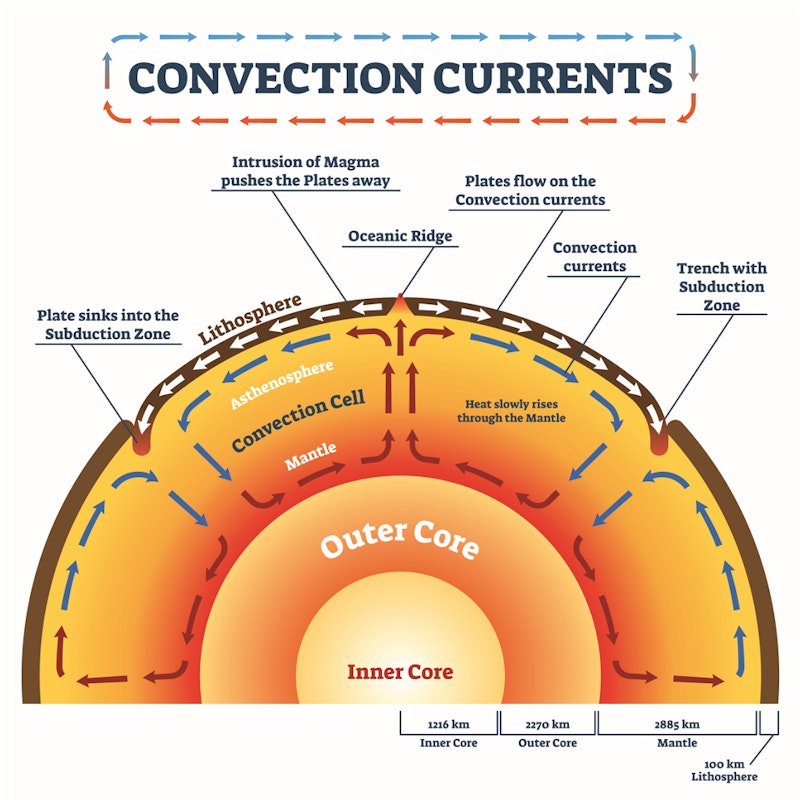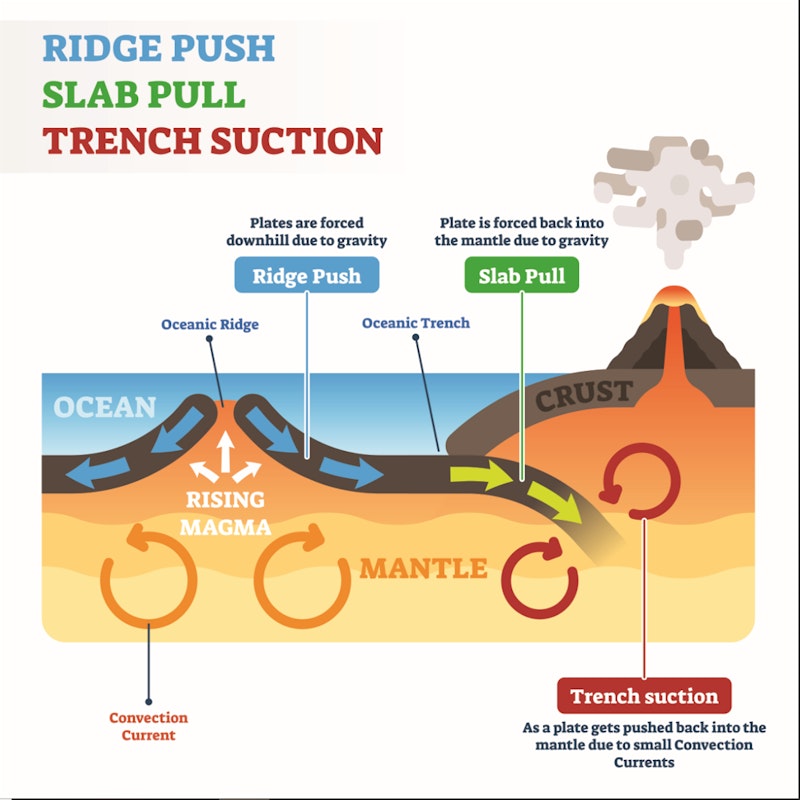Study Notes
GCSE Geography | How do Tectonic Plates Move? (Tectonic Hazards 3)
- Level:
- GCSE
- Board:
- AQA, OCR
Last updated 18 Oct 2024
This is a controversial debate in geography with scientists struggling to agree about what actually makes tectonic plates move.
Convection currents
The more widely understood and most commonly used theory is convection - at the Earth's core temperatures reach around 6,000 °C which causes the hot magma (molten rock) to rise in the mantle. This then cools and sinks towards the core. These currents build up pressure as they flow below the lithosphere, carrying the plates with them. For a long time this theory was widely accepted despite only limited evidence of convection currents ever being found, as modern imaging techniques have not been able to identify convection currents within the mantle that are large enough to move tectonic plates. As a result this theory has been largely discredited.

Ridge push and slab pull
Ridge push and slab pull is now the more widely accepted theory. Ocean ridges form high above the ocean floor at constructive margins (where the plates are moving away from each other). Here the mantle melts to form molten magma which rises as the plates move apart and then cools to form new oceanic lithosphere. This new material is less dense than the asthenosphere, but cools and thickens over time, becoming more dense.
This new material thickens with distance from the ocean ridge forming underwater mountain ranges and rifts, making the boundary between the solid lithosphere and the plastic-like asthenosphere deeper. As a result the boundary of the lithosphere and asthenosphere slopes away from the ridge (which can be 4,000m above the surrounding ocean floor), pushing the older part of the plate in front due to gravity. This is known as ridge push.
At destructive margins, the new oceanic lithosphere is forced under the continental plate, and sinks under its own weight into the mantle at subduction zones. This pulls slabs of plate apart, which causes the sea floor to spread or rifts to form. This is known as slab pull.

You might also like

Anatomy of an Earthquake
14th May 2015